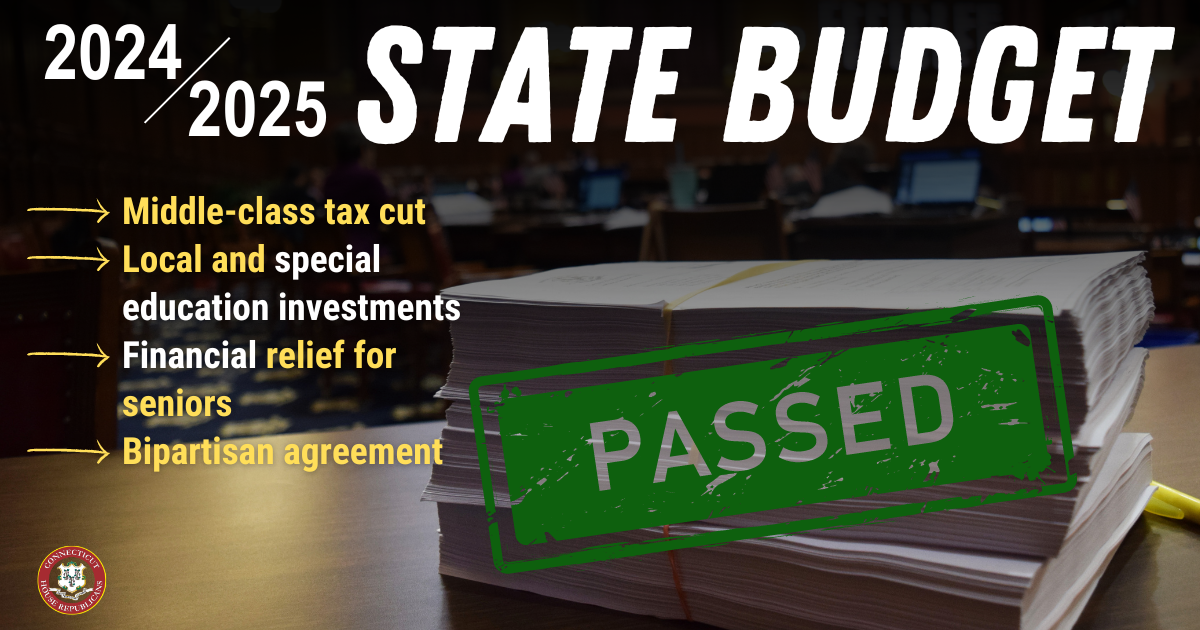


HARTFORD – On Tuesday, State Rep. Tom O’Dea (R-125) voted to adopt the FY 2024-2025 Connecticut state budget, headlined by a historic cut to the state income tax for middle- and low-income earners and families.
The fully balanced bipartisan budget features more than $150 million for local education, investments in public safety, strict adherence to fiscal guardrails established in the 2017 budget agreement, and establishes a phase-out on pension and annuity taxes. Each of these key initiatives were proposed and supported by House Republicans dating back to 2022, when they proposed the income tax cut included in the final compromise.
“Through this bipartisan agreement, we are delivering meaningful financial relief with income tax cuts and increased funding for Connecticut’s vital services through investments in education for our children. Tax easements for our seniors will also make Connecticut a better home for retirees, which I am very proud of,” Rep. O’Dea said. “This display of bipartisanship has resulted in a product that will greatly benefit our communities over the next two years.”
Income tax cuts included in the budget reduce the bottom two marginal tax rates – from 3% to 2% and from 5% to 4.5% – with full benefit going to single filers earning under $105k and joint filers earning under $210k.
The new state budget will bolster Education Cost Sharing (ECS) funding which directly infuses our local schools with additional tools to strengthen our children’s education. In receiving these ECS funds, municipalities can better allocate the monies saved by the funding injection without raising costs for taxpayers. The budget also fully funds the Excess Cost grants for special education reimbursements to towns.
By the end of the budget biennium, Stamford is projected to receive $19,780,415 in ECS funding, almost a 24% increase from FY 2023. Darien will receive $516,567 over the same biennium, more than a 9% increase.
New Canaan will be held harmless rather than lose ECS funding, with flat funding from the state over the biennium without losing money or being forced to compensate through cost increases. They will receive $415,130 by FY 2025. ECS funding is determined by the state according to a community or school district’s individual need.
Additionally, the budget will shrink the size of state government by requiring state agencies to follow real-world hiring principles. In doing so, the state will save $200 million.
Connecticut seniors are supported in the budget agreement, which eliminates the benefits cliff on their pension and annuity income. The plan phases out the income tax exemption on those earnings post-retirement gradually.
Omitted from the final document were other strong Republican initiatives like a first-ever child tax deduction of $2,000 per child, but improvements to an opt-in pass-through entity tax credit to benefit small businesses was approved.
Funding to improve safety and training for local firefighters were included, assisting in promotion from Firefighter I to Firefighter II, an additional $5 million in firefighter cancer relief funding, and helping to remove PFAS, which contains dangerous carcinogens, from standard use in fire service operations.
The bipartisan state budget was enabled by honoring the spending, volatility, and bonding caps enacted by Republicans in the 2017 budget agreement that were re-certified early in the 2023 legislative session.
The budget passed the House after midnight Tuesday on a 139-12 vote and in the Senate Tuesday afternoon, 35-1. It waits to be signed by Governor Lamont.
###
